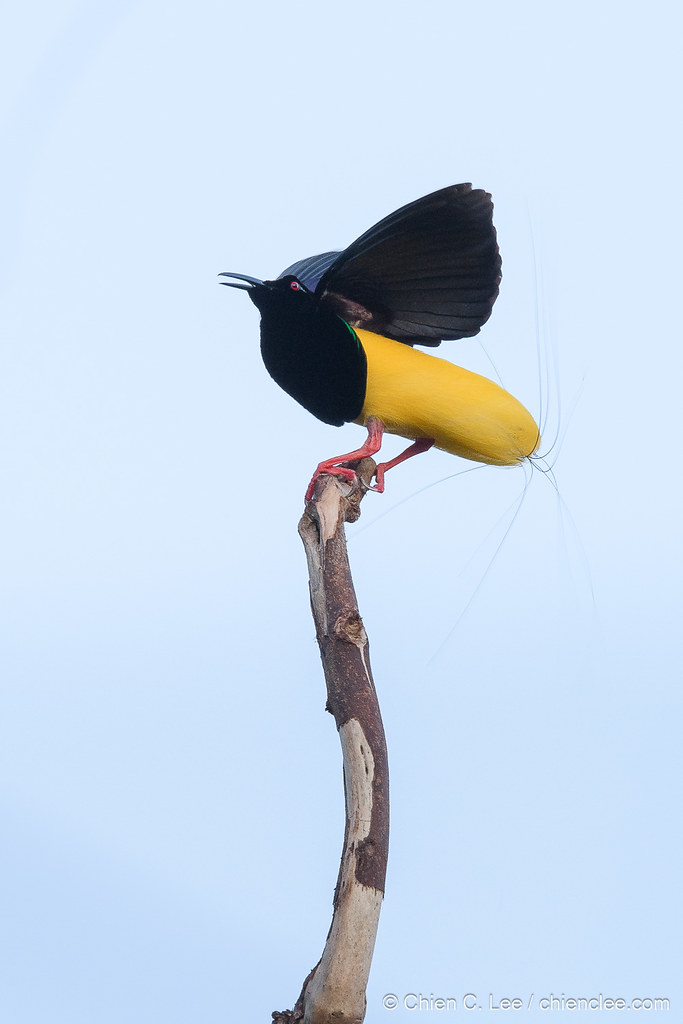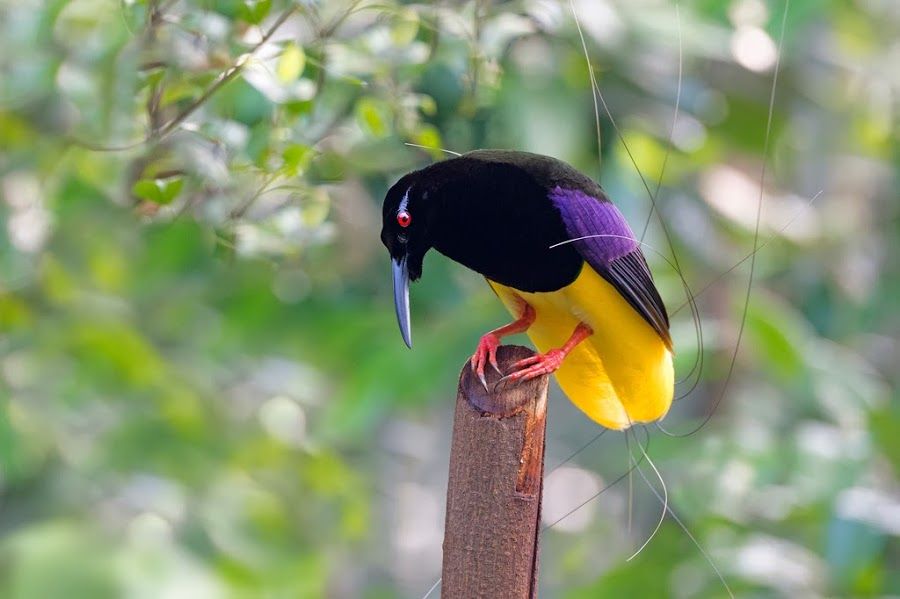Regularly I like to blog about some of the more interesting birds of the world. Today, one of the 45 species of Birds-of-Paradise.
Birds-of-Paradise, family Paradisaedae, are only found in Indonesia, New Guinea, and a small part of Australia. In the early years of exploration, European Traders shipped Bird-of-Paradise skins from New Guinea to collectors and museums. The natives cut the feet off the birds to make them look better and when the skins were examined in Europe, some thought the birds simply had no feet and remained in the air their entire lives – they were in “paradise”, hence the name.

Let’s look at the Twelve-wired Bird-of-Paradise, Seleucidis melanoleucus, Seleucidis, from the Greek, means “locust-eating birds” and Latin melanoleucus which means “black and white.” Found in the lowland and montane rainforests of New Guinea and nearby islands, favoring swamp forests, the Twelve-wired Bird-of-Paradise, about 13 inches (33 cm) long, is a stunning and elusive bird, Its diet consists mainly of fruits and arthropods supplemented with frogs and nectar.
Also called the Twelve-wired Manucode, the male is black with a long black bill and brilliant yellow flank feathers. Emanating from the rear of these feathers are twelve feather shafts modified into black wires that curve upward and turn white. The iris of the eye is bright blood red and the mouth aqua green. This vibrant and complex plumage of the male takes seven years to fully develop, all for the purpose of attracting a female.

When the male Twelve-wired Bird-of-Paradise sets up a territory, he makes sure he is at least 2000 ft (609 m) from each of the neighboring males to provide him plenty of space for his courtship displays. Displaying on a tree stump, he vocalizes; when a female approaches, the male brushes her face with those twelve wires while performing a swaying dance. Then the pair participates in bill fencing, movements of wings, flank plumes and wires, thighs, gaping and the male wiping his wires against the female. After courtship and copulation, the female builds a nest, a shallow cup lined with rootlets and plant fibers, up to 15 feet (5 m) above ground. The one egg is incubated by the female for 20 days; the young fledge three days later.
Birds-of-Paradise are one of the iconic symbols of Papua; Papuans believe these birds are the reincarnation of fairies flitting around the jungles. The birds’ population is being impacted by habitat loss and capture for skins and the pet trade.
Hunting of Birds-of-Paradise has been banned since 1980 with some exceptions for indigenous peoples for cultural uses. Although New Guinea still has 80 percent of its tropical forest still intact, like many areas of the globe the birds are threatened by logging and agriculture. But ecotourism has encouraged conservation and in 2018 the governors of Indonesia’s two New Guinea provinces committed to conserve 70% of the forest cover for the western half of the island.
Little Tobago, off the coast of Venezuela, is also known as Bird of Paradise Island. There are no Birds-of-paradise on the island although they were introduced to the island in 1909, but a later hurricane decimated their population.
The Bird-of-Paradise flower was named after the bird.
How does the vibrant plumage of the male Twelve-wired Bird-of-Paradise play a role in attracting potential mates, and what is the significance of the lengthy seven-year development process for this plumage? Regards, Telkom University/a>